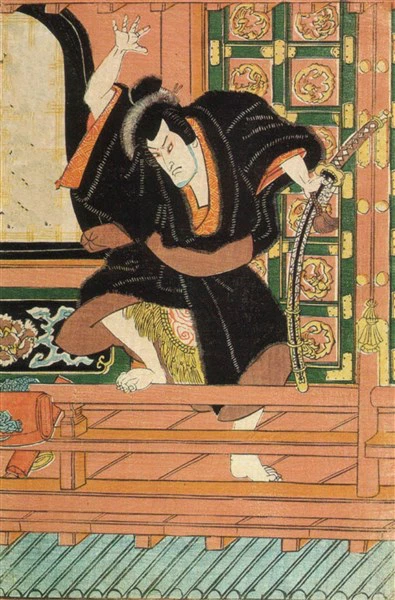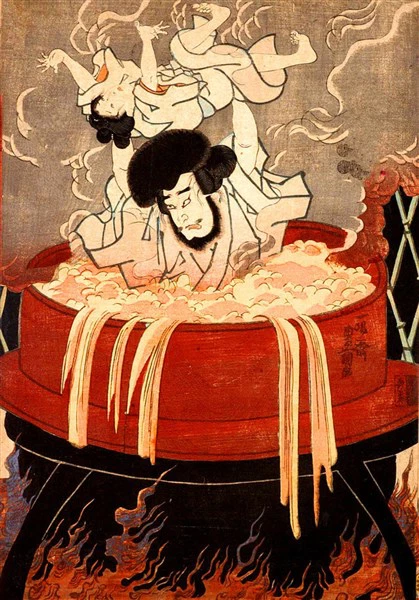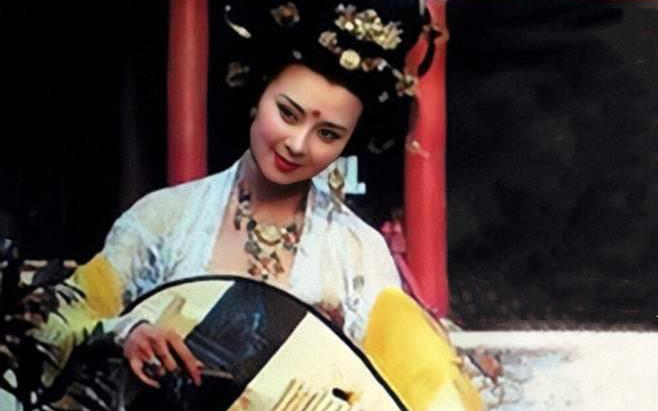Legend of the Japanese “Robin Hood”
In Japan, there is a similar figure, which is said by folk, but his background is still controversial.
From ninja to thief

Ishikawa Goemon illustration. Photo: pinterest
Although the legend of Ishikawa Goemon – the Japanese “Robin Hood” is scattered among folk, there is evidence that this character once existed. In the biography of the warlord Toyotomi Hideyoshi, he is mentioned as a talented thief.
In fact, there are many different stories about Goemon’s life that are spread. One document states that he was born in 1558, as Sanada Kuranoshin, into a samurai family that served the Miyoshi clan in Iga province.
As a child, Sanada witnessed his father and mother being killed by soldiers of the Ashikaga shogunate, the dominant force in Japan. Sanada vows revenge for his father’s death. When he was 15 years old, he trained to become a ninja under the tutelage of Momochi Sandayu, the founder of a school of ninjutsu (ninjutsu) in Iga Prefecture.
Though orphaned, Sanada was raised as the son of his master Sandayu, his strict teacher.
However, things become complicated when Sanada is seduced by one of his master’s wives and is evicted from the house, when the affair between the two is revealed.
Different versions say he stole his master’s legendary sword, even taking his master’s wife to hide. In many stories, Goemon’s guilty lover was killed by himself for getting in the way of his escape.
This shows Goemon as a hot-tempered, violent and impatient man, in contrast to the later depiction of a charity robber, taking from the rich to give to the poor. From here comes the second version of Goemon’s life.
In this version, Ishikawa Goemon’s name is Gorokizu, from Kawachi Prefecture and not a runaway ninja at all. Gorokizu moved to the Kansai region, took the name Ishikawa Goemon and formed a band of thieves.
Here, he plots to break in, rob the rich feudal lords, merchants, clerics, samurai and anyone with something of value. Bandits act at night. During the day, they will pose as merchants seeking to establish social relationships to detect prey.
Goemon and his accomplices always disperse their loot among the common people to distract the authorities and hide their theft.
This is a very important part of the lore about Ishikawa Goemon, as it questions whether he is a Robin Hood-type hero who helps the poor with the rich’s money or is simply a fraud. , using the poor as a front, distracting the attention of the government about its actions.
It was not until the Edo period (1603-1868) that Goemon’s actions were romanticized, quickly turning him into a hero, although that may not be entirely true.
Heroic death

Ishikawa Goemon and his son were executed. Photo: pinterest
What makes Goemon so legendary is that his way of dying, tragically and heroically, is always remembered.
After his wife and son were captured by Lord Hideyoshi, Goemon vowed revenge. Trying to infiltrate Hideyoshi’s castle at Fushimi, he entered the lord’s room and was about to attack when he accidentally knocked a bell off the table, alarming the guards.
Arrested and eventually identified as a notorious bandit, having committed many earth-shattering robberies, Goemon was taken to the main gate of the temple at Nanzen-Ji in Kyoto to atone for his crimes.
Regarding his capture and death, another story goes that, Hideyoshi was warned about Goemon’s presence in the castle by a magic censer, so it was easy to detect and catch the intruder.
Goemon was not beheaded as was customary at the time, but suffered a much more gruesome death, where he was thrown into a cauldron of oil with his son to be boiled to death.
Legend has it that Goemon tried to save his young son by lifting him from the cauldron. In some stories, his son was freed and saved by onlookers.
In another story, realizing the futility of saving his son, Goemon threw him into the boiling cauldron so that death would come as quickly as possible. He then lifted his son’s body above his head as a sign of defiance against Hideyoshi. He died without regret and defiant autocracy.
Before his death, Goemon admitted to being a thief. However, he also called Hideyoshi the thief who stole Japan from the people. This refusal to make concessions to the lord gave him a place in Japanese folklore.
As mentioned, Hideyoshi’s biography is considered a reliable source and confirms the existence of the Goemon character, as well as of his death. But his identity, as well as the distribution of stolen wealth to the poor, like Robin Hood, is still up for debate.
Before his death, Goemon wrote a poem with the content that no matter how the world turns out, there will always be thieves.
Regardless of whether Goemon is an ordinary hero or thief, he is still noted in Japanese folklore and legends. Today, Ishikawa Goemon is the subject of many movies, cartoons, video games, and plays.
at Blogtuan.info – Source: danviet.vn – Read the original article here
